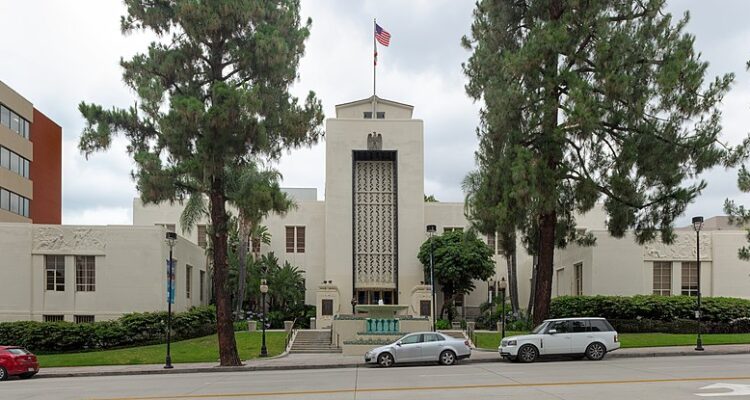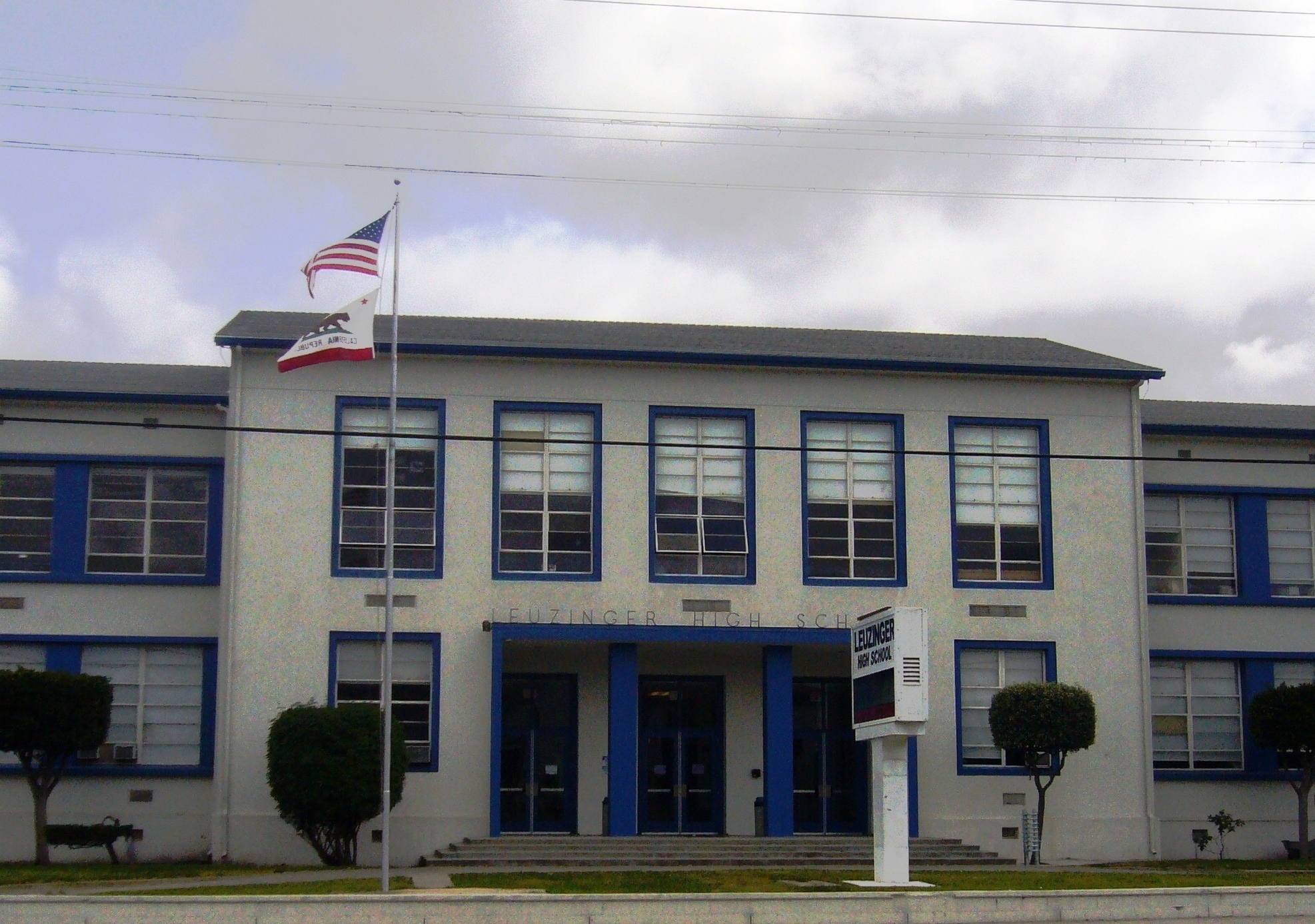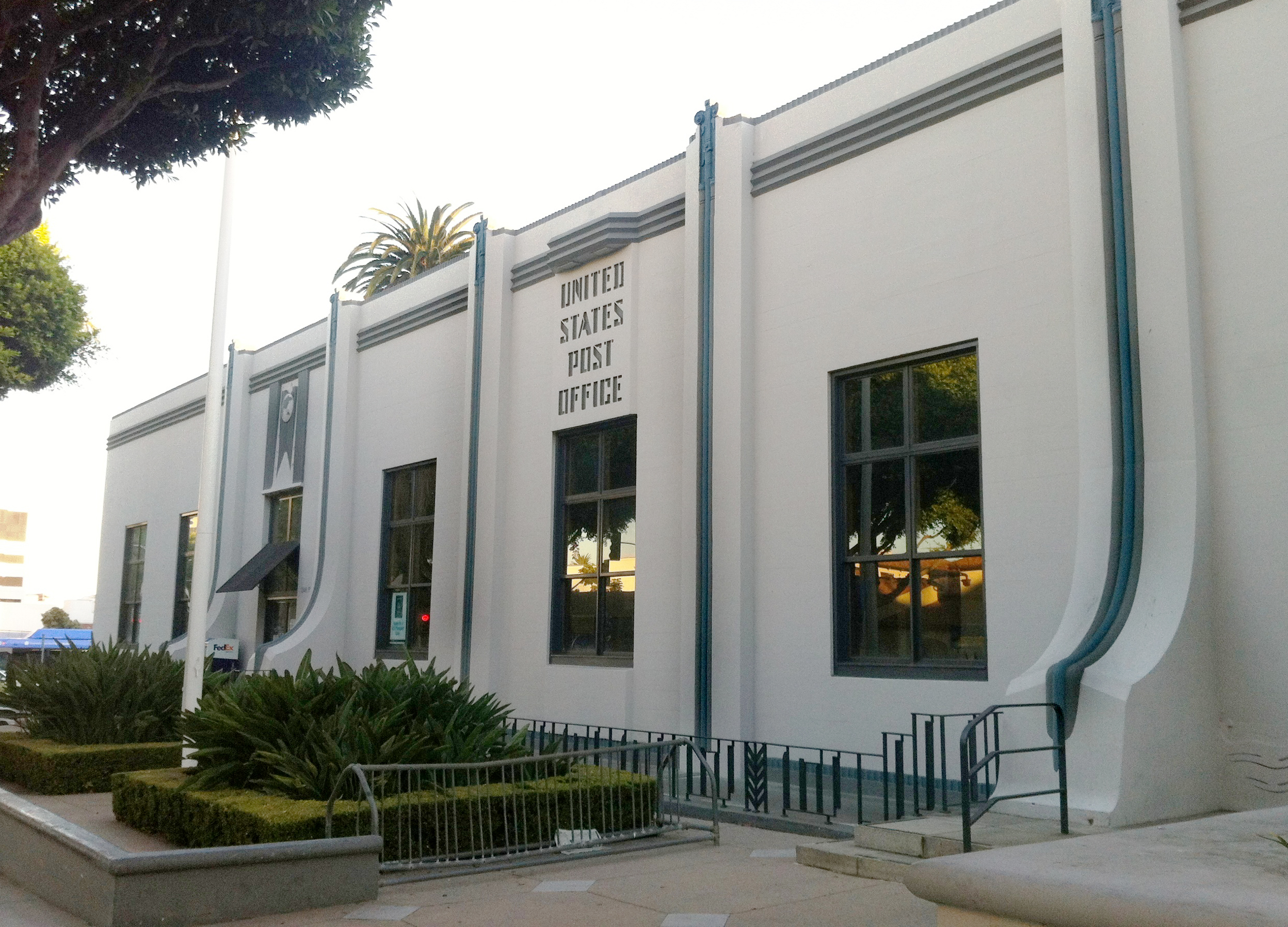
Place
Burbank City Hall
An icon of the Late Moderne style, Burbank City Hall epitomizes the best of civic architecture in terms of aesthetics as well as function and remains a point of pride for the City of Burbank.
Place Details
Address
Get directions
Architect
Year
Style
Decade
Property Type
Community
Upon its completion in 1943, Burbank City Hall became the municipal heart of the city in more ways than one: as its National Register nomination states, "It was possible to simultaneously respond to a fire, book and incarcerate a criminal, treat a broken bone, fix a faulty carburetor, conduct a marriage or a trial, as well as carry on the normal administrative business of the City, all under one roof."
It was designed by architects William Allen and George Lutzi, who created a WPA Moderne-style, reinforced concrete building epitomizing the best of civic architecture in terms of aesthetics as well as function. City Hall's main entry is dominated by a four-story central tower with an inset decorative concrete grille and a stern granite eagle guarding the flagpole above.
The tower is flanked by identical, symmetrical two-story wings, each of which is connected perpendicularly to a one-story wing, creating a central courtyard area with an ornate concrete fountain (its black and turquoise tile was added in 1980). City Hall's exterior decorations include bas-reliefs depicting the accomplishments of humanity, while
its interior lobby boasts nineteen kinds of marble, bronze railings, Lucite glass ornaments, and a compass rose design honoring the aerospace industry.
The building has become an icon of the WPA Moderne style, and justifiably continues to be a point of pride for the City of Burbank.


